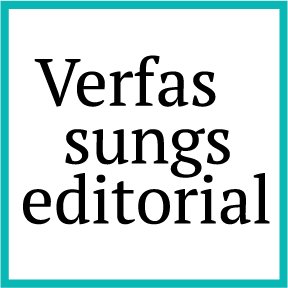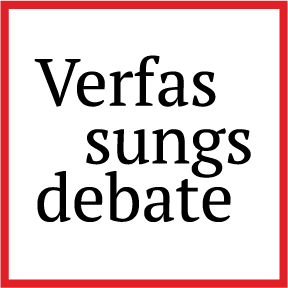Othering in EU Law
The Case of Migrants
This piece is published posthumously. Saniya Amraoui was a PhD researcher at the European University Institute, working on Conditionality in EU Migration and Asylum Law. In this unfinished project, she examined the growing excess of conditions and constraints imposed on migrants under European law. Her work was grounded in the hypothesis that conditionality regimes are not merely legal rules to be followed, but expressions of a deeper governing logic shaping a migrant’s ability to enter, move, remain in the European space, and be joined by family members. Saniya continued her research despite her illness and produced the following text. She was not able to complete revisions or review the final proofs. What follows is a draft that powerfully reflects her intellectual depth and unwavering commitment to the rights and dignity of migrants. (Note by Loïc Azoulai, Vincent Réveillère and Urška Šadl)
Since the onset of the so-called “migrant crisis” in 2015, recurring narratives have proliferated, asserting that “migrants in Europe are thieves, struggle to integrate into host societies, take European jobs, and impose their cultures on others.” These narratives represent some of the most pervasive stereotypes circulated daily about migrants. Indeed, the migrant crisis has been leveraged to advance ideas such as “massive invasion” and “the great replacement” – perceived threats to public security, and inevitable cultural shifts. Such rhetoric is part of a broader phenomenon of “othering” – a strategy that relies, in part, on legal mechanisms to facilitate exclusion and discrimination against migrant populations.
In this brief, I argue that the current structure of EU law, with its colonial legacies (as discussed by scholars like Eklund and El-Enany), actively contributes to the process of othering migrants, casting them as not fully, or not yet, belonging within European communities as defined by EU legal frameworks. As Mbembe also articulates, the concept of “borderization” operates through exclusionary practices that classify certain populations as excessive, undesirable, or even superfluous. These populations are regulated by spatial and legal mechanisms reminiscent of colonial and apartheid-era restrictions, creating zones of limited mobility and intensified surveillance. Furthermore, this othering process is not merely a reflection of social or political discourse but is embedded in the very fabric of EU law. Finally, I explore potential approaches to mitigate these practices, emphasizing the importance of critical self-reflection among legal scholars to address and potentially dismantle these exclusionary dynamics.
How can one identify mechanisms of othering? A prominent and recurring narrative is the “us versus them” distinction, which ultimately leads to the exclusion of the latter group due to their perceived differences from the former. From a legal perspective, to argue that othering is occurring, one must demonstrate that law, as a system of norms regulating migrants’ presence and mobility within the EU, actively participates in this phenomenon, either through legislative processes or judicial interpretation.
The phenomenon of othering in European migration law
When examining mechanisms of othering through law-making, the legal category of EU citizenship is a key example of how distinctions are drawn, positioning third-country nationals as “the others.” The creation of this category facilitated the transposition of the nation-state paradigm—differentiating citizens from non-citizens – onto a larger, supranational scale within the European Union as argued by Kochenov and Ganty. Establishing an EU regime of (im)mobility enables a framework aimed at controlling ‘third-country nationals’ mobility through increased surveillance and border controls. Such forms of othering are thus enabled and reinforced through legislative processes.
Other forms of othering occur through legal implementation or the lack of it – manifested in discriminatory legislation or practices that disregard the legal framework, thereby marginalizing immigrants. Systematic detention, racial profiling, the criminalization of immigration, and other human rights violations exemplify abuses that contribute to the process of othering.
These two forms of othering are complementary, as one establishes the foundations for an “us vs. them” logic within the legal framework, while the other facilitates the enactment of othering practices.
Othering practices do not always manifest as negative discrimination; at times, they take the form of affirmative action.. Recently, the European Court of Justice ruled that both gender and nationality can constitute sufficient grounds for Afghan women to obtain asylum. In Joined Cases C‑608/22 and C‑609/22, the European Court of Justice (ECJ) addressed the question of whether the cumulative restrictions and discrimination faced by Afghan women under the Taliban regime – such as prohibitions on employment, education, healthcare access, and freedom of movement – amount to persecution under Directive 2011/95/EU and thus qualify for refugee status in the EU.
The cases concerned two Afghan women seeking asylum in Austria, who contended that, as Afghan women subject to Taliban rule, they endured pervasive discrimination rising to the level of persecution. The Austrian lower court initially denied their claim, citing insufficient evidence of individual risk. However, upon appeal, the Supreme Administrative Court referred the question to the ECJ, seeking clarification on whether systematic discrimination and recurrent attacks against Afghan women by the Taliban could constitute persecution. In its ruling, the ECJ concluded that the Taliban’s policies indeed satisfy the threshold for persecution, thereby validating refugee status for Afghan women based on gender alone. This judgment substantially broadens the eligibility of Afghan women for international protection.
While hailed as a landmark judgment, this decision implicitly positions Afghan women as inherently different from women of other nationalities, focusing on nationality and gender as primary factors rather than the degree of persecution itself. Furthermore, the ruling underscores the suffering of Afghan women under Taliban rule but omits any consideration of the persecution faced by Afghan men from the same regime. As a result, Afghan women emerge as a new category of asylum seekers, whose protection hinges solely on nationality and gender, thereby creating a distinction between them and other female asylum applicants within the European Union.
Finally, this approach neglects a significant dimension: the violence that women encounter in the West, particularly within the EU. Such a narrative enables a complementary perspective wherein European men are portrayed as inherently feminist and incapable of committing violent acts, while violence is represented as an issue exclusive to men from non-European backgrounds. In fact, recent legal research in Europe has, however, put forward the failure of the state to protect women. Finally, such reasoning also ignores the responsibility of European powers involved in Afghanistan in the past decades.
To what extent are lawyers and legal practitioners aware of their role in perpetuating these practices and the responsibilities they bear in reproducing such phenomena? It appears that many may be less mindful, a circumstance that can partly be attributed to legal education, which often emphasizes the formation of neutral agents expected to approach legal analysis and interpretation with objectivity. Critical legal scholarship, however, offers valuable insights by illuminating the potentially harmful mechanisms embedded within these legal frameworks.
Analyzing EU migration law through the lens of critical legal studies
Migration law cannot be fully analyzed without considering the economic, political, and cultural factors that shape it. While some scholars may challenge this assertion, critical legal studies have demonstrated how law can actively contribute to the marginalization of specific groups. More specifically, Critical Race Theory (CRT) and Third World Approaches to International Law (TWAIL) provide essential frameworks to highlight certain forms of discrimination against migrants, interpreting discrimination not solely as a set of adverse attitudes that migrants endure, but as a body of legal practices that actively harm them.
Recent scholarship has examined differentiated responses to the presence of migrants based on the perceived level of threat they represent. For instance, the EU’s prompt response to Ukrainian refugees following Russia’s 2022 invasion contrasts sharply with the stricter, more restrictive measures applied to refugees from non-European countries, such as Syria or Afghanistan, during the 2015-2016 crisis, following the analysis of Corcodel and Fragkou. This disparity perpetuates racial hierarchies, where European migrants and refugees are more readily accepted while migrants from the Global South face significant barriers. Such differential treatment raises critical questions about racial biases within supposedly neutral legal frameworks and underscores the need for a more equitable approach to refugee and migrant protection.
Migration patterns are influenced by a variety of factors, among which colonial history plays a significant role. In Global North countries with colonial legacies, a substantial number of migrants originate from former colonies. This trend is often attributed to enduring cultural and linguistic connections, which facilitate migrants’ movement and settlement in these nations. However, legal scholars frequently overlook the fact that both voluntary and forced migration are deeply rooted in postcolonial dynamics, driven by economic disparities, social inequities, and political instability that many former colonies continue to experience as lingering impacts of colonial rule. As these inequalities persist, migration flows from these regions to former colonial powers are likely to continue, reinforcing the imperative for migration studies to incorporate these historical and systemic influences, including their legal dimensions.
In this context, does the EU’s legal framework on migration and asylum require yet another (ineffective) reform?
The urge not to reform and possible alternatives
The EU Migration Pact, formally adopted in 2024, aims to establish a more cohesive and balanced approach to managing migration across Europe. Touted as a major shift in EU migration policy, the Pact seeks to stabilize a system previously characterized by tensions and an uneven distribution of responsibilities across member states. While viewed as a crucial step toward achieving a unified EU migration approach, it has met substantial opposition from several member states, particularly in Eastern Europe.
The Pact has, however, raised concerns over, for instance, increased border processing protocols that may lead to prolonged detention times and the externalization of migration control. Furthermore, these regulations adhere to a deterrence-based logic, which has shown limited efficacy in managing migration. Within this context, it is worth questioning the value of continuous, incremental reforms and considering the drawbacks of reformism – a gradual, institutional, and often superficial approach that hampers the potential for radical and transformative change. What alternative models might disrupt this cycle?
In response to the trend of reformism, some scholars advocate for non-reformist reforms. This approach seeks to transcend neoliberal frameworks and to move beyond a legalistic lens. Unlike conventional reform, non-reformist reforms emphasize conflict and antagonism rather than neutrality and depoliticization, creating a shift in power dynamics. Such an outcome, if applied to EU migration law, could only materialize if scholars and practitioners actively engage with civil society actors and affected individuals. It necessitates an openness to recognize that legal measures alone are insufficient for meaningful change. The tendency toward excessive legislation in EU migration policy has not resolved the underlying challenges, nor has the framing of migration as a European issue exclusively.
It is time to move beyond reformism and critically examine the foundational principles of the EU legal framework on migration.




The academic community has lost a promising and committed scholar. I hope Saniya’s research will continue to inspire others and contribute to shaping a more just legal framework.
For those who had the privilege of knowing her personally, Saniya’s kindness, determination, and brilliance will never be forgotten.
Saniya was deeply passionate about her subject matter and demonstrated unwavering commitment to the complexities of migration. Her research sheds critical light on some of the underlying principles of humanitarian issues, contributing valuable insights to a field in urgent need of thoughtful analysis and ethical engagement.
We hope that her work will serve as a foundation for future studies and inspire practical solutions to real-world challenges. Saniya leaves behind not only a remarkable intellectual legacy but also a profound void in the hearts of all who had the privilege of knowing and working with her.